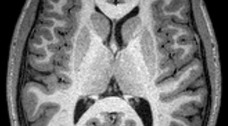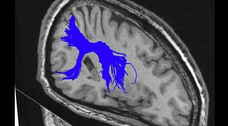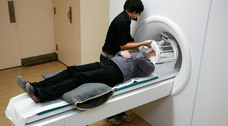Martin Lepage's team is working on the following neuroimaging research projects.
Neurocognitive and Neuroimaging Markers of Remission in First Episode Psychosis
Funding agency: CIHR
Funding period: 2004-2014

Since 2004, the Lepage Lab has longitudinally followed a large cohort of first-episode psychosis (FEP) patients, which has allowed us to successfully characterize this population from clinical, neurocognitive and neuroimaging perspectives.
We are now focusing our efforts on studying markers of remission at 1 and 2 year time points following a first episode of psychosis. Identifying the early neurocognitive and neuroimaging markers of full remission along with the progressive changes that may occur over time in non-remitted patients following a first-episode of psychosis may facilitate early identification of patients with a poor prognosis.
Furthermore, negative symptoms are often present in the prodomal period leading up to the onset of a first episode of psychosis; therefore, by examining the clinical data we have gathered pertaining to negative symptoms at follow-ups, we seek to establish a subgroup of patients with persistent negative symptoms (PNS) and another subgroup with transient negative symptoms.
Because patients with PNS often have a poorer prognosis, we hope to provide data for future development of different biological and psychosocial treatment approaches that specifically target the early course of the illness, during which time negative symptoms are often present.
Students: Cindy Hovington, Clifford Cassidy
Biological and Psychological Determinants of Insight in Schizophrenia
Funding agency: CIHR
Funding period: 2010-2014

This large, cross-sectional project aims to use various neurocognitive and neuroimaging measures to study multiple dimensions of insight in a large cohort of persons who have suffered from schizophrenia for at least five years.
It is well known in schizophrenia research that psychosis is, in part, characterized by poor insight; however, recent data, including our own, indicate that insight fluctuates during the first years following the onset of psychosis, such that multiple episodes of psychosis may lead to increased insight.
Our approach is based on a model of insight in which cognitive processes that are required for good insight may be either impaired or unsolicited due to motivational factors. As such, exploring multiple dimensions of insight will make possible the identification of sets of variables that are closely associated with different manifestations of poor insight within this chronic population. To that end, we will use:
- Structural Magnetic Resonance Imaging (MRI) to assess the volumetry of multiple key brain regions
- fMRI with the aim of identifying malleable factors that could potentially become the target of future pharmacological and psychosocial interventions
Student: Lisa Buchy
Functional Neuroimaging of Episodic Memory and Schizophrenia
Funding agency: CIHR
Funding period: 2005-2011

Due to the severity of episodic memory deficits and their ability to predict functional outcome along with treatment response in schizophrenia, they are now viewed as a core feature of the illness. A better understanding of these deficits could increase our knowledge about the pathophysiology of this illness and improve treatment strategies.
To further our understanding of the limits of memory processing in schizophrenia, we seek to achieve two goals:
- To use fMRI to unravel the neural correlates involved in frontal memory processes and investigate how those frontal memory processes are selectively deficient in schizophrenia
- To explore the relationships between prefrontal cortex, episodic memory and negative symptoms (e.g. flat affect, anhedonia, avolition, alogia).
Prefrontal Cortex and Episodic Memory Retrieval
Funding agency: NSERC
Funding period: 2004-2015
Through the use of fMRI/MRI and rTMS, this research program examines the contribution of the prefrontal cortex (PFC) to neural processes, such as those that are involved in normal memory functions, the retrieval of associative information, the control of interference, and the retrieval of affective-visual association.
While our main short-term goal is to examine the retrieval and suppression of different types of associative information in healthy controls, longer-term objectives include examining the relationship between those prefrontal processes and more posterior brain regions.
Finally, another important objective is to use this knowledge to investigate neural correlates of memory dysfunction in neuropsychiatric populations, such as schizophrenia. We hope that such studies will improve our understanding of the neural basis of memory dysfunctions in these clinical populations and that our data will provide some insight on preclinical markers of the disease and disease progression.
Student: Colin Hawco


